A Few More Nightmares
In which Norm closes out October by spinning up a whole mess of seasonal selections. Happy Halloween, everybody!

Happy Halloween, everybody! Let’s toast the end of spooky season with one last wave of discs.
Arrow Video closes out October with a UHD special edition of Michael Dougherty’s 2007 horror anthology Trick ’R Treat, which spins a quartet of horror stories all taking place in the same small town on the same night.

A mash-up of Creepshow and Pulp Fiction, somehow, it’s beloved by a generation of horror fans who connected to it at what I assume is a reasonably young age: With surprisingly restrained helpings of nudity and mostly-suggested violence, Dougherty’s breakout now plays very much like a My First Horror Movie for teenagers wondering what comes after Stranger Things.
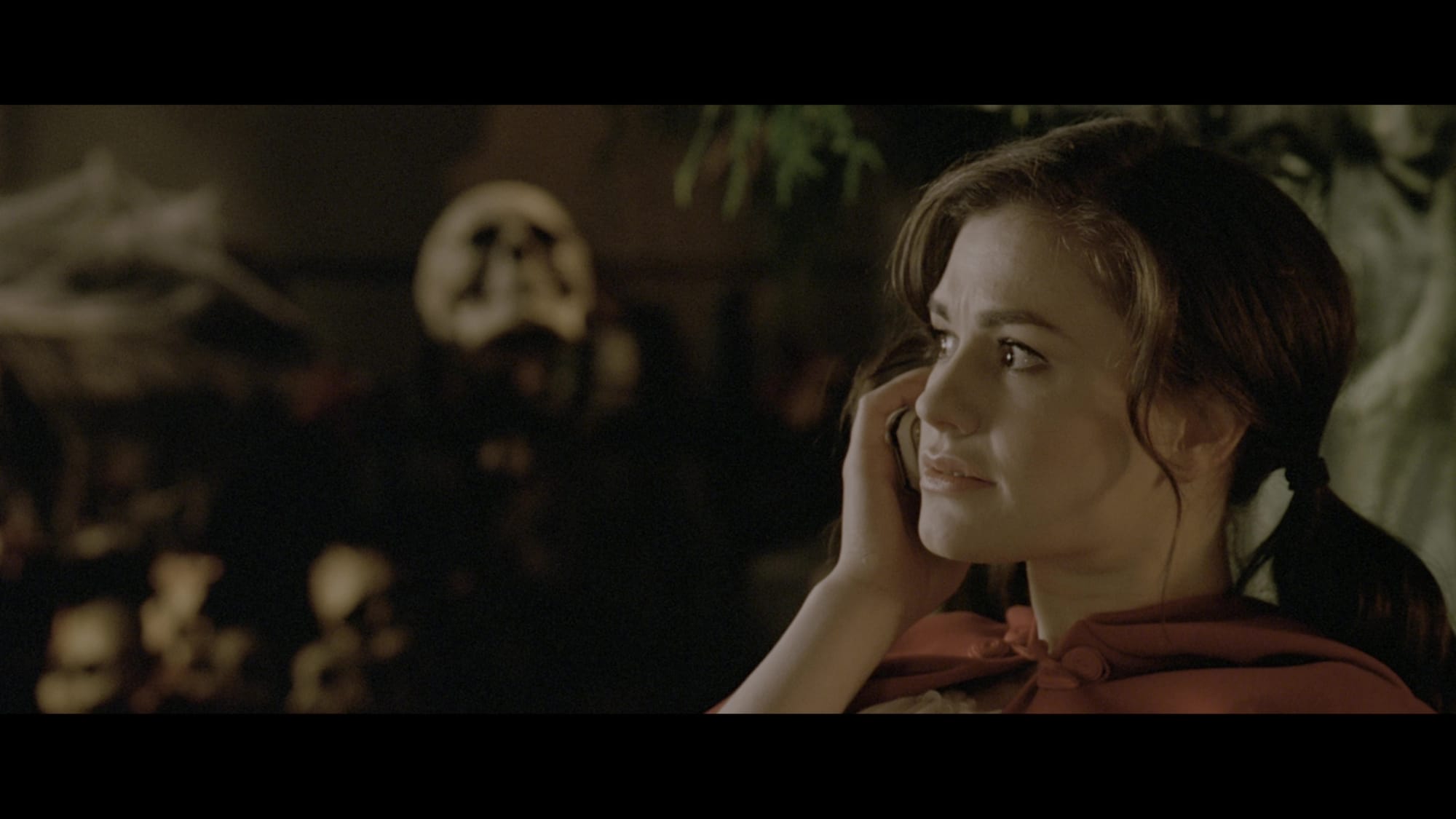
But even if the storytelling is downright comfortable, the cast is killing it: There’s Anna Paquin as a young woman on the prowl with her sister (Lauren Lee Smith) and some more experienced friends; there’s her X2 co-star Brian Cox as an ailing recluse stalked by a kid with an especially creepy costume. (Oh right, Bryan Singer produced this.) And there’s Dylan Baker as the neighborhood nice guy who’s secretly a serial killer – and Tamoh Penikett and Leslie Bibb turn up in a framing sequence as a horny couple whose decision to take their decorations down leads to a frightful comeuppance. Pumpkin and Honey Bunny had an easier time of things, is all I’m saying.
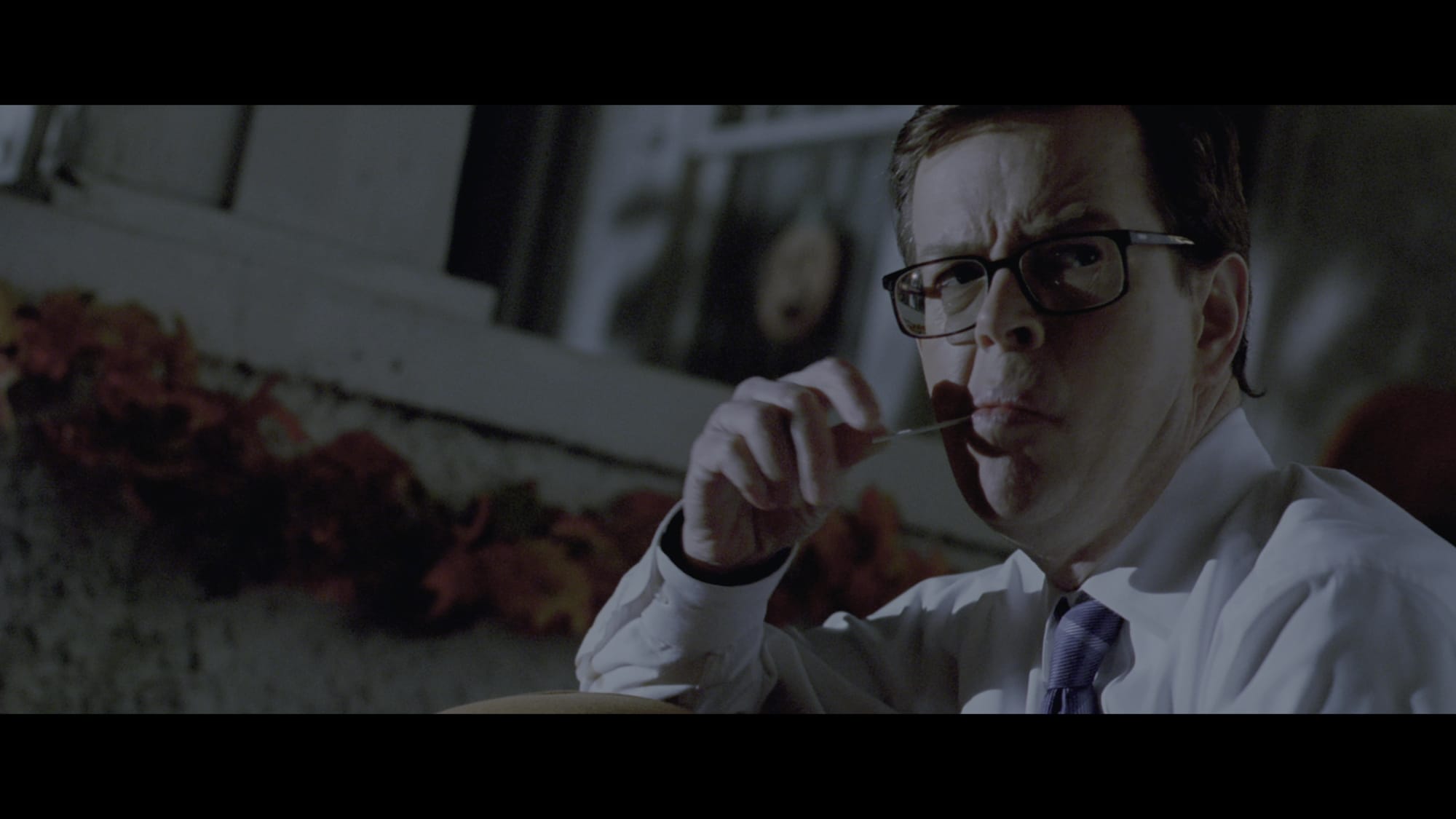
This is the third time Trick ’R Treat has been released on disc, after a modest special edition from Warner in 2007 and a deluxe BD from Shout! Studios in 2018; Arrow’s new 4K release, mastered from a new scan of the original camera negative, assembles all of the extras produced for both of those discs – including a fun commentary featuring Dougherty and selected crew members, a half-hour production documentary narrated by Cox and a host of retrospective featurettes – and adds a new commentary with Dougherty and Dead Meat Podcast co-hosts James A. Janisse and Chelsea Rebecca and interviews with production designer Mark Freeborn, DP Glen MacPherson, costume designer Trish Keating, creasture designer Patrick Tatopoulos and performer Quinn Lord, who plays the aforementioned creepy kid Sam.
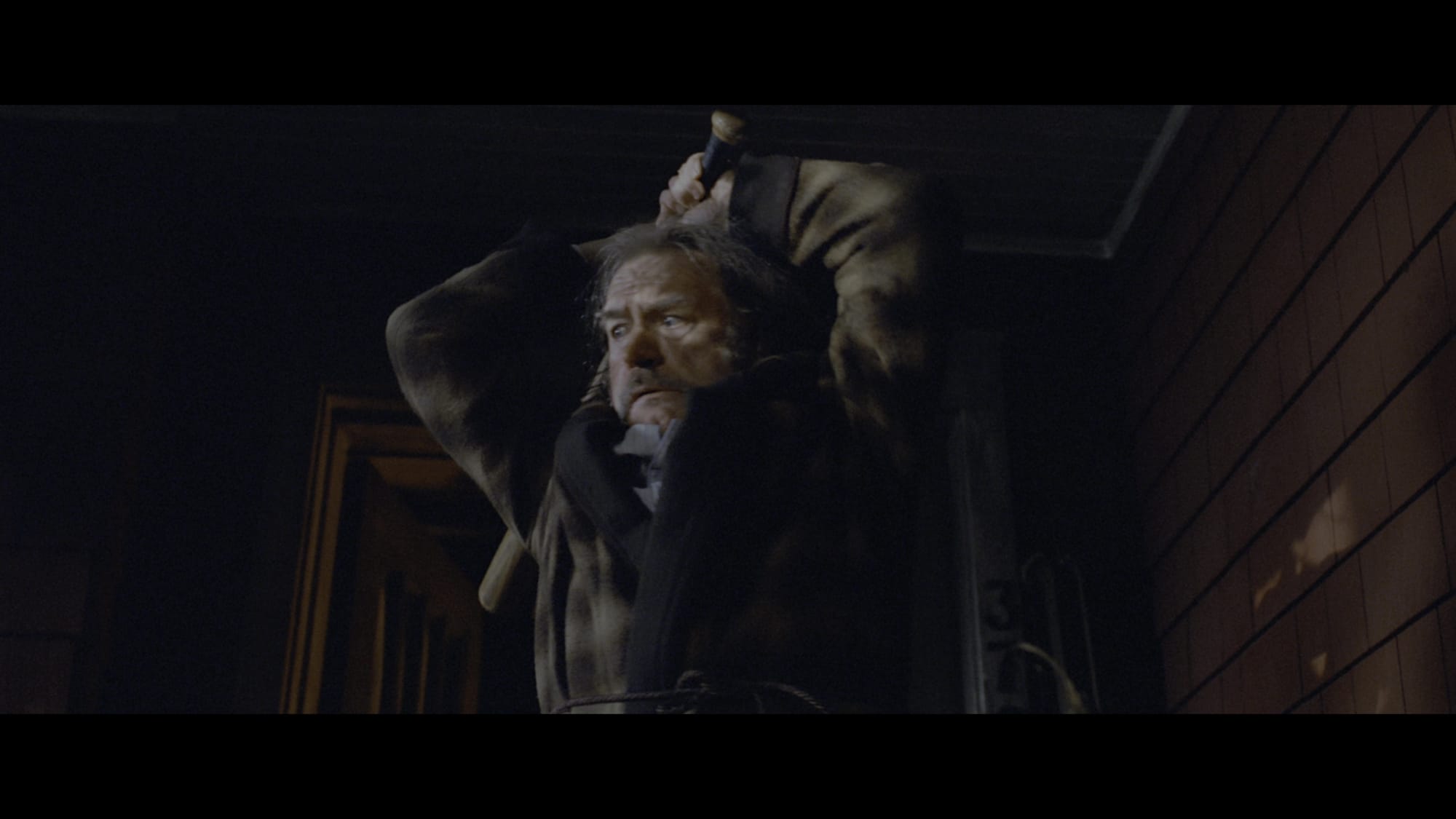
The disc is packaged with art cards, a fold-out poster and a booklet of essays, but honestly? The real star here is the restoration, which makes the feature – originated on good ol’ 35mm film – look like it was shot yesterday. I’m not saying this should be considered a heroic restoration; Trick ’R Treat was a major-studio picture, produced just 17 years ago. But neither of the previous Blu-rays looked anywhere near this good, so if you’re one of those fans you’re going to want to have this one.
And that’s not all Arrow has for us. In addition to the Hellraiser set I reviewed last week, the label is rolling out one other big scary box this month: J-Horror Rising, a collection of Japanese horror from the Kadokawa studio between 1999 and 2007.
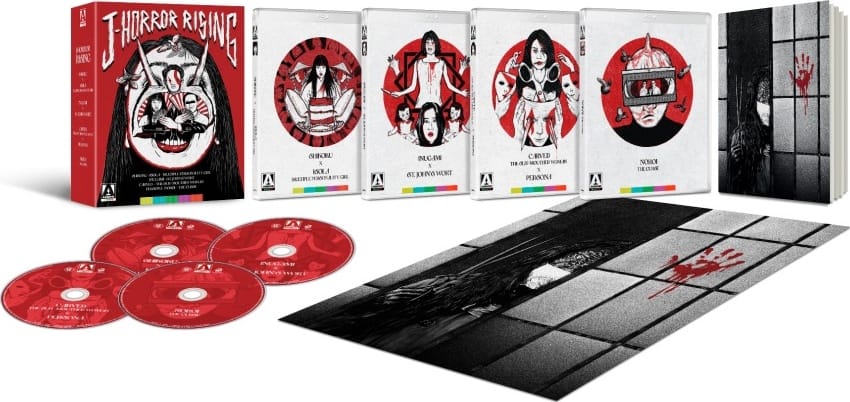
Seven features are packaged on four Blu-rays: Shikoku and Isola: Multiple Personality Girl on Disc 1, Inugami and St. John’s Wort on Disc 2, Carved: The Slit-Mouthed Woman and Persona on Disc 3 and finally Noroi: The Curse on its own platter.
These films didn’t break out internationally on the same scale as Arrow’s other J-horror releases, like Ring or Dark Water or the new edition of Tomie coming next month, but they’re playing in the same sandbox, with all-too-mortal heroes plunged into supernatural mysteries and forced to parse ancient curses lest they become the next victim of whatever angry spirit they’ve crossed.
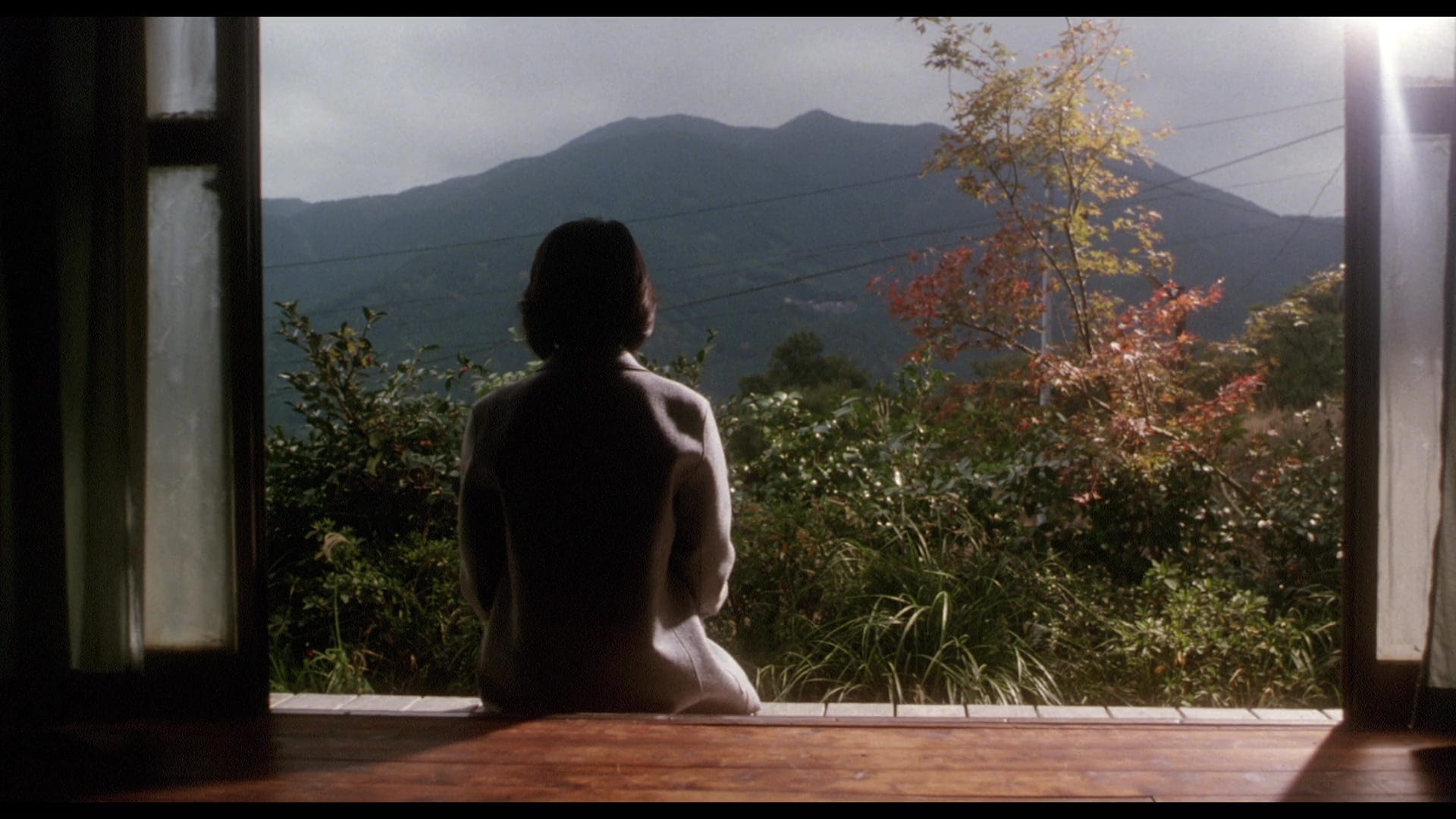
Shunichi Nagasaki’s Shikoku and Masato Harada’s Inugami are the gentlest of the set – the former an atmospheric ghost story about a young woman coming home after a decade’s absence to discover her village is haunted by grief as well as spirits; the latter a romance between two nice people whose budding relationship is threatened by one partner’s possibly accursed family tree. (Okay, there’s no “possibly” about it.)
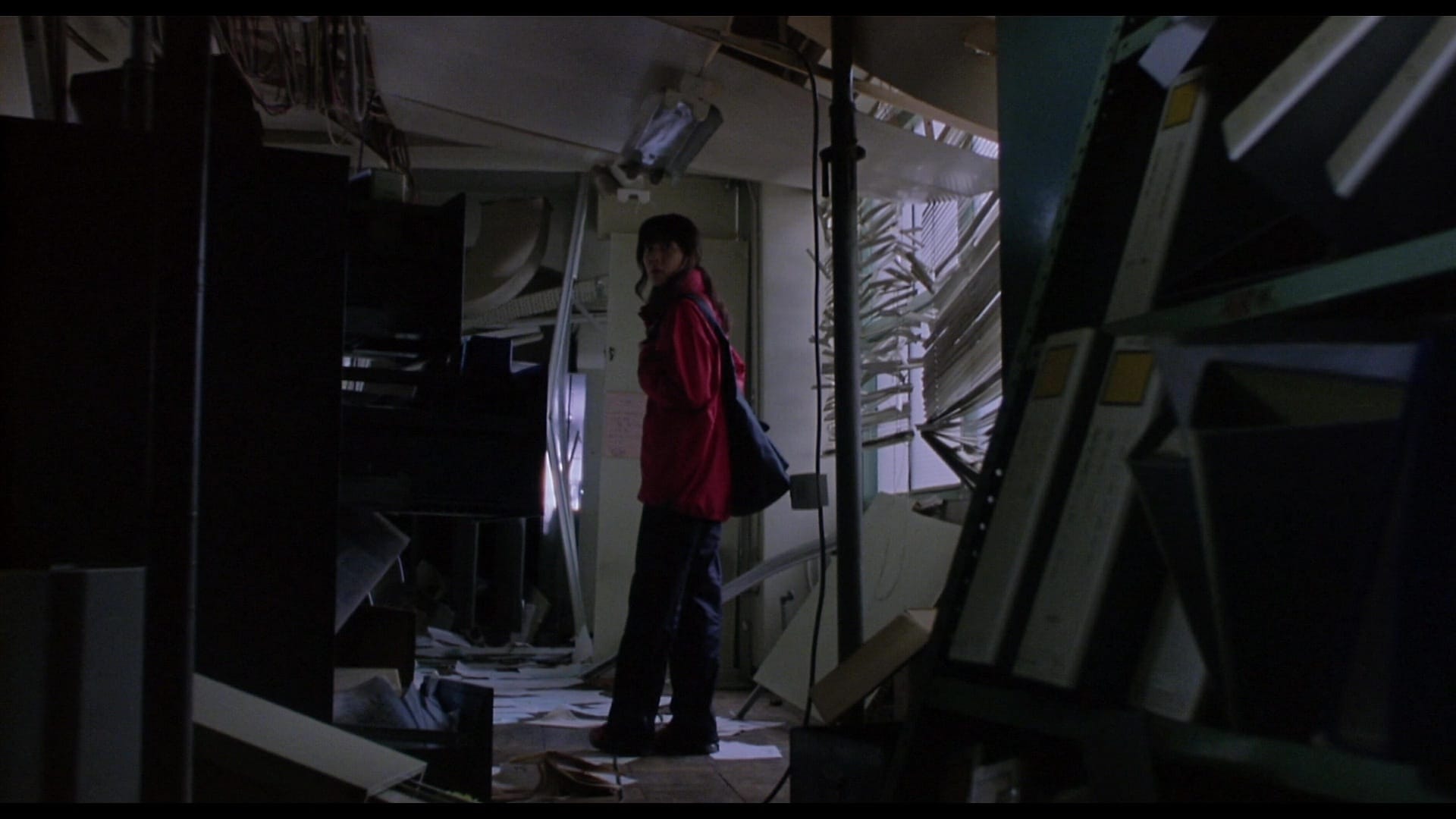
Toshiyuki Mizutani’s Isola is a modest chiller starring Yoshino Kimura as a teenaged earthquake survivor haunted by her trauma – and maybe something else – while Takashi Komatsu’s Persona also focuses on high-schoolers (specifically, future Battle Royale co-stars Tatsuya Fujiwara and Chiaki Kuriyama) caught in a wave of violence enabled by ceramic masks.
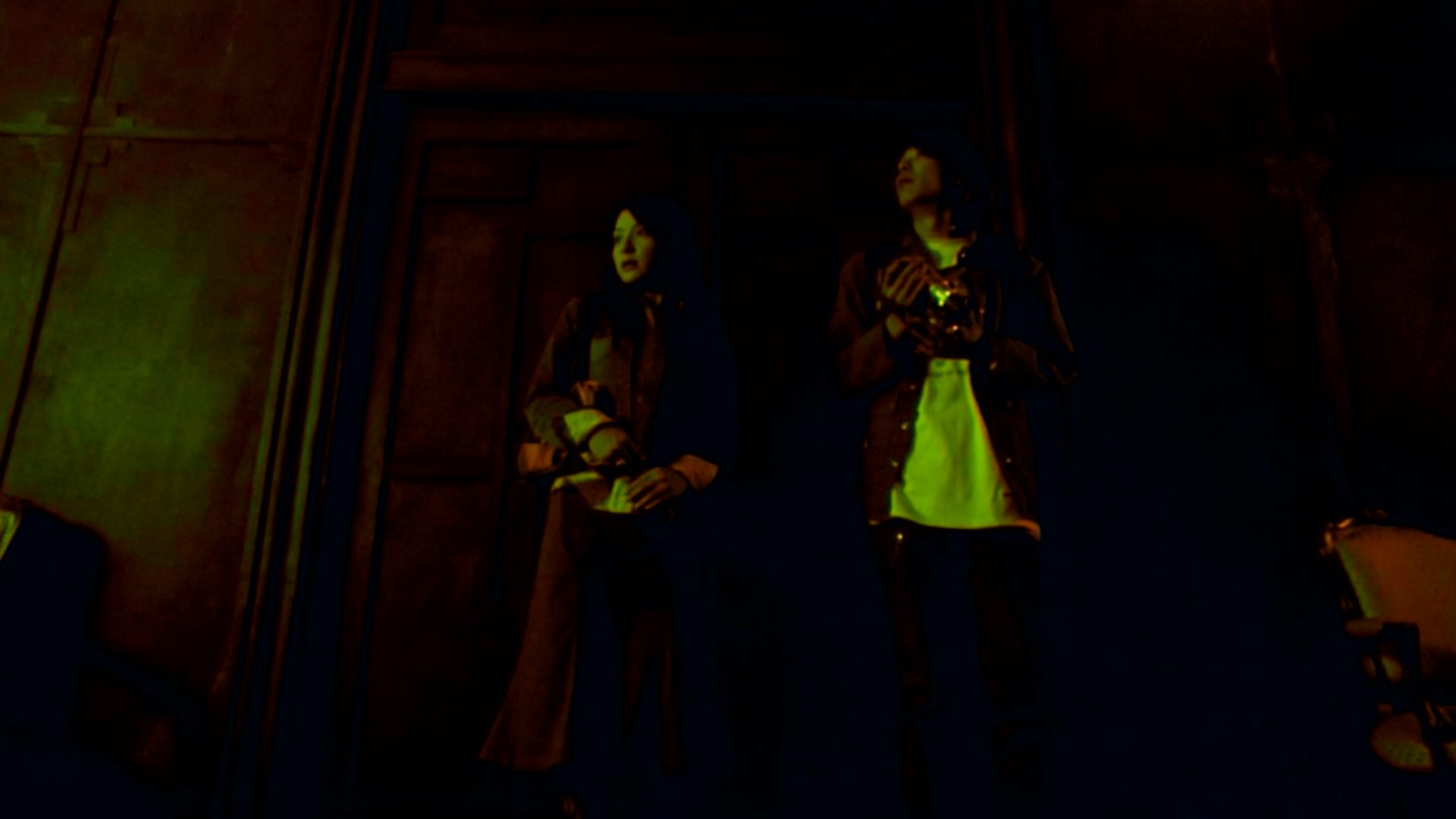
Ten Shimoyama’s St. John’s Wort is an experiment in adding videogame logic to a tale of ancient horror, with Ju-On’s Megumi Okina as an artist who opens up her family mansion to source some creepy ideas for a new game – and quickly comes to regret it – while Kôji Shiraishi’s Carved is straight-up Candyman For Kids, with the eponymous angry spirit conjured to stalk a group of youngsters.
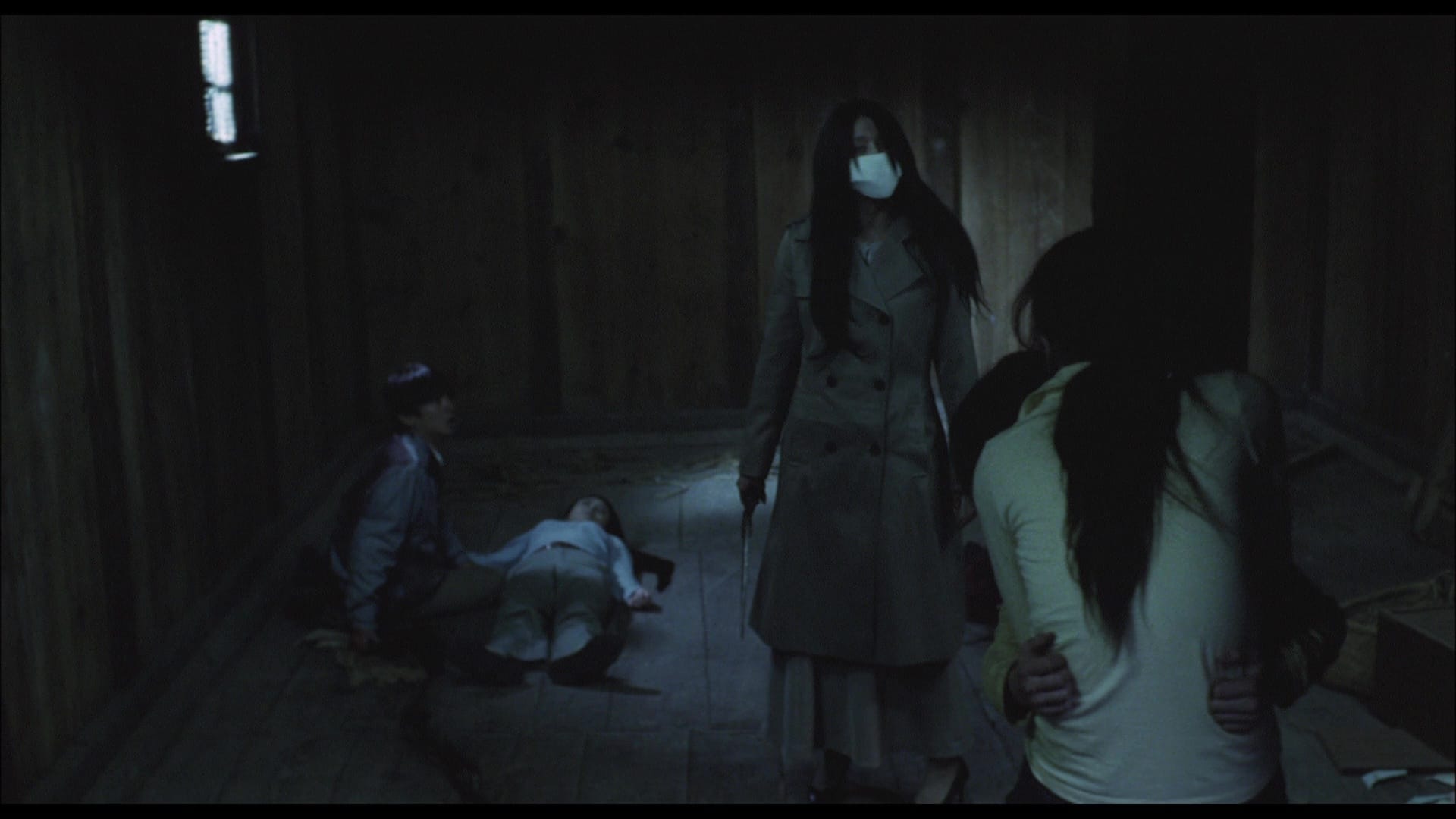
These six all range from “decent” to “pretty good” on the horror meter, playing with familiar concepts and occasionally executing their scares or shivers in interesting ways. St. John’s Wort has the most interesting visual ideas, its game imagery leaking into the outside word, but Shikoku and Carved are pretty satisfying in their own right, with modest goals well-realized.
The best of the bunch, though, is Noroi: The Curse.
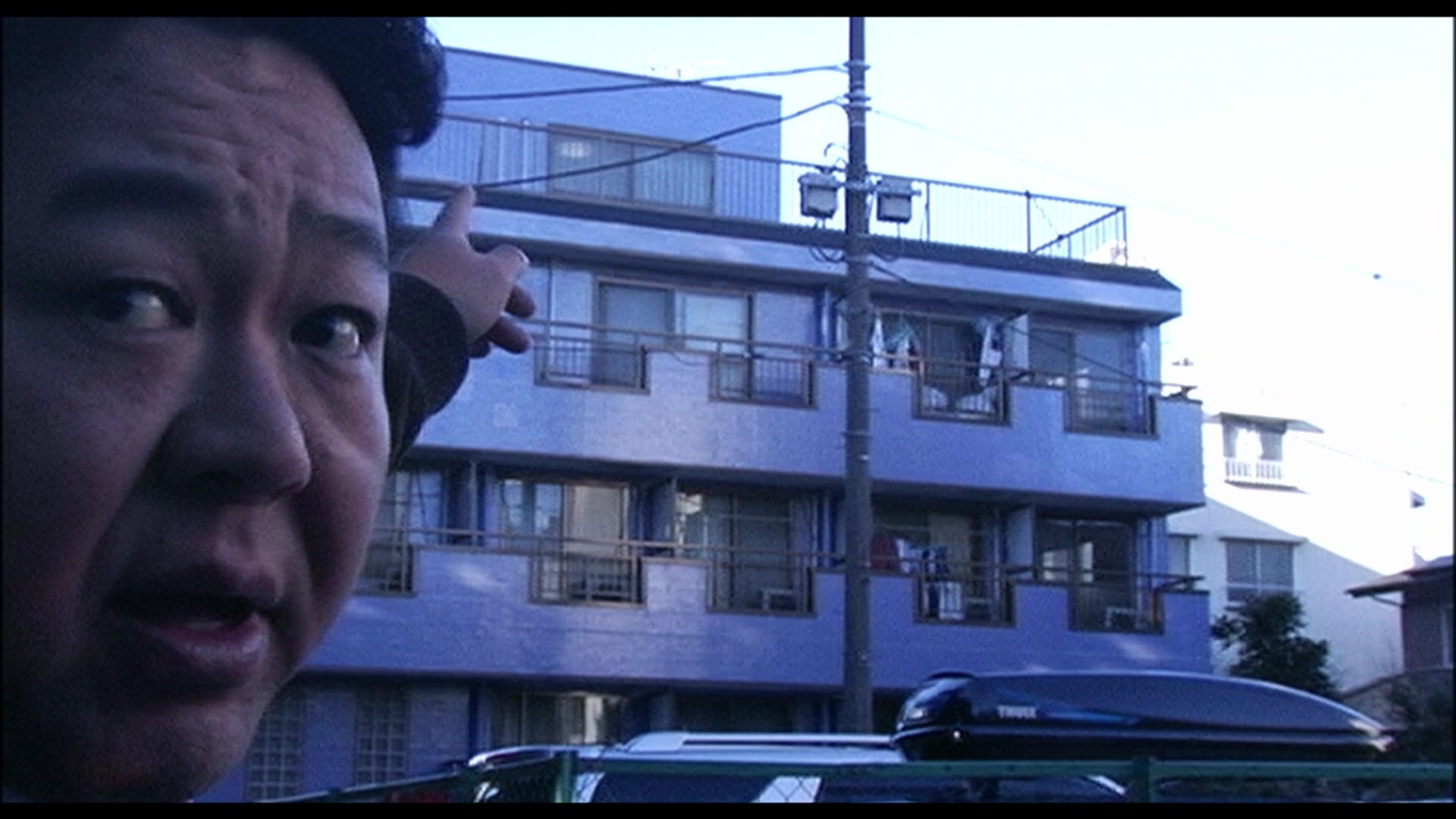
Made by Shiriashi in 2005, two years before Carved, Noroi is a found-footage piece purportedly constructed from recordings of a missing journalist (Jin Muraki) whose disappearance may or may not have something to do with the house fire that claimed the life of his wife Keiko (Miyako Hanai), which in turn might have something to do with his research into an accursed shrine. Again, no surprises as to how this all turns out, but the characters are well-developed, the structure is very smart and there’s a clever element of “reality” at play in the casting of several actors as versions of themselves – particularly Marika Matsumoto, who was then best known to Japanese audiences for a series of chirpy TV commercials.
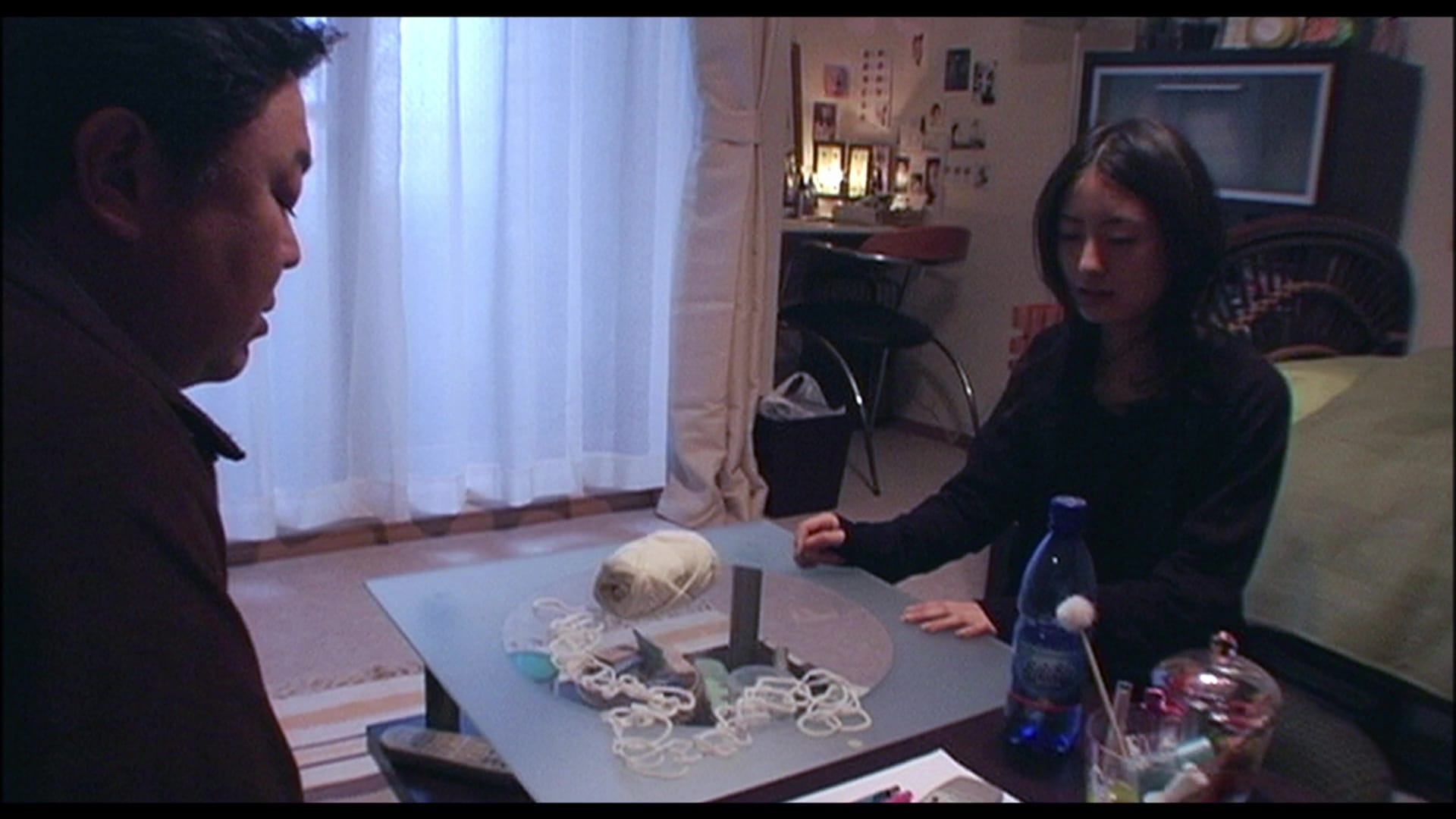
If you want one reason to buy this package, Noroi has got to be it. (Well, Noroi and the exhaustive supplements Arrow commissioned for every film in the set.) The digital-video aesthetic holds up really well, giving it a sense of grainy verité it may not have had two decades ago – and, indeed, the movie’s distinctive DV look scales up to Blu-ray in a more satisfying manner than some of the other films in the set.
“Remastered from the best available elements” does a lot of heavy lifting here; none of the titles assembled for J-Horror Rising looked especially great to begin with, given their smallish budgets and the tech available at the time, and the masters provided by Kadokawa are definitely not restoration-quality. St. John's Wort, with its digitally distorted palette, can look downright ugly at this level of detail:
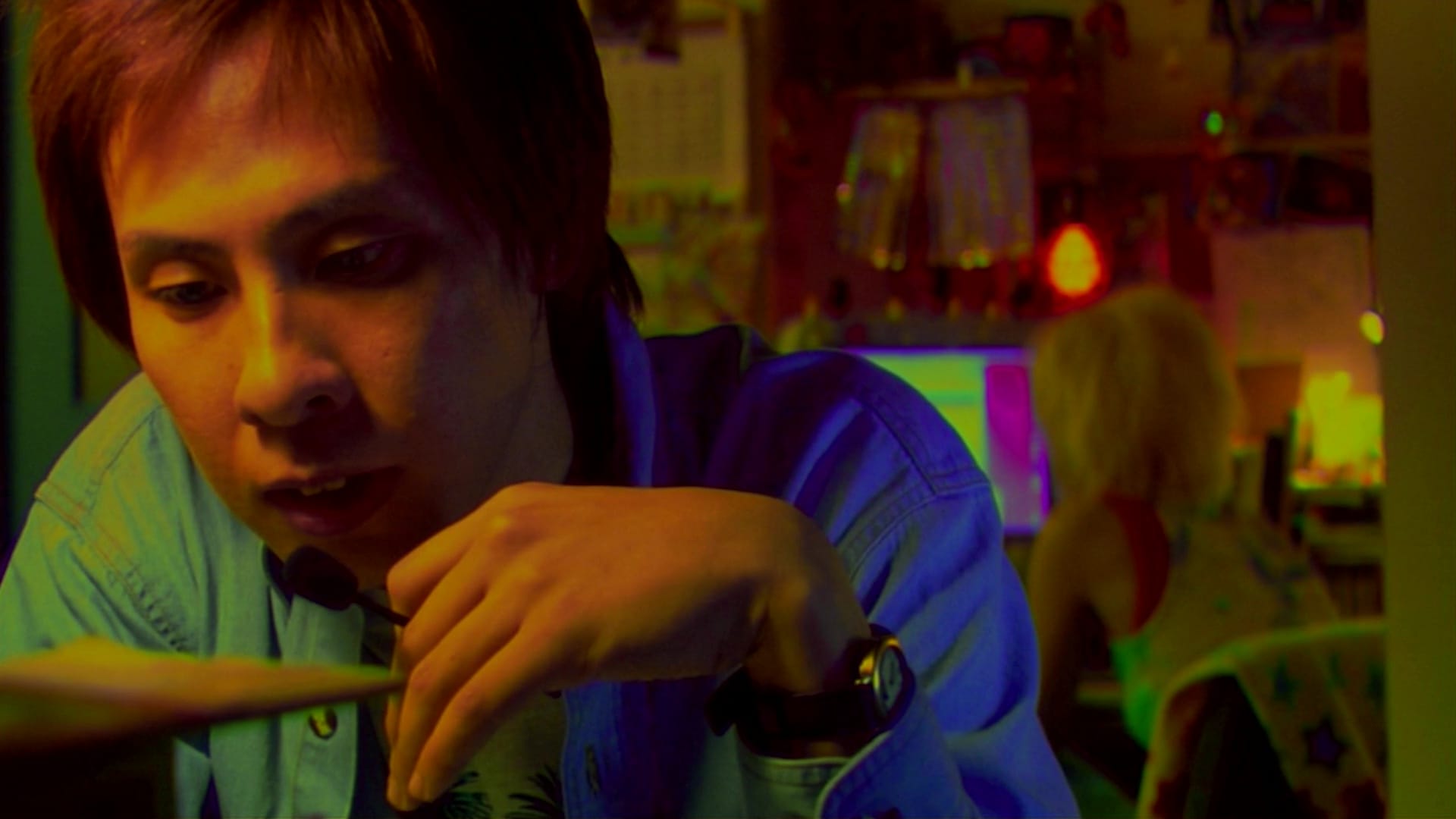
Given the price of the set, this is one time I’d recommend you spring for an Arrow Player trial to check out the quality of the transfers before you buy – and then wait for the next big sale at either Arrow or Unobstructed View, to bring the cost down to something more reasonable.
Finally, while they’re not exactly Halloween-specific, anything from Severin Films qualifies as seasonal programming – and the three releases arriving this week are, if nothing else, perfect to put on in the background to freak out trick-or-treaters.
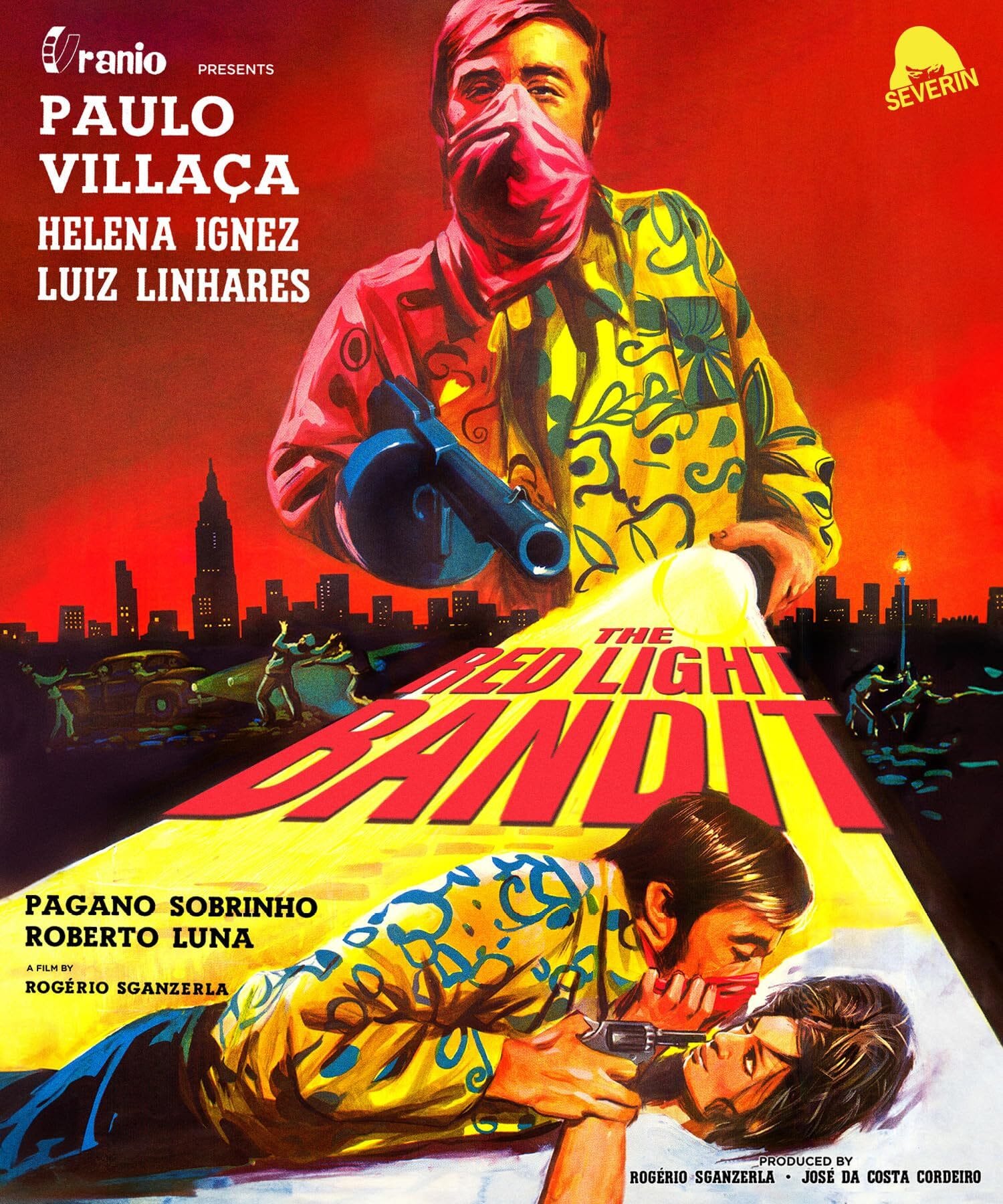
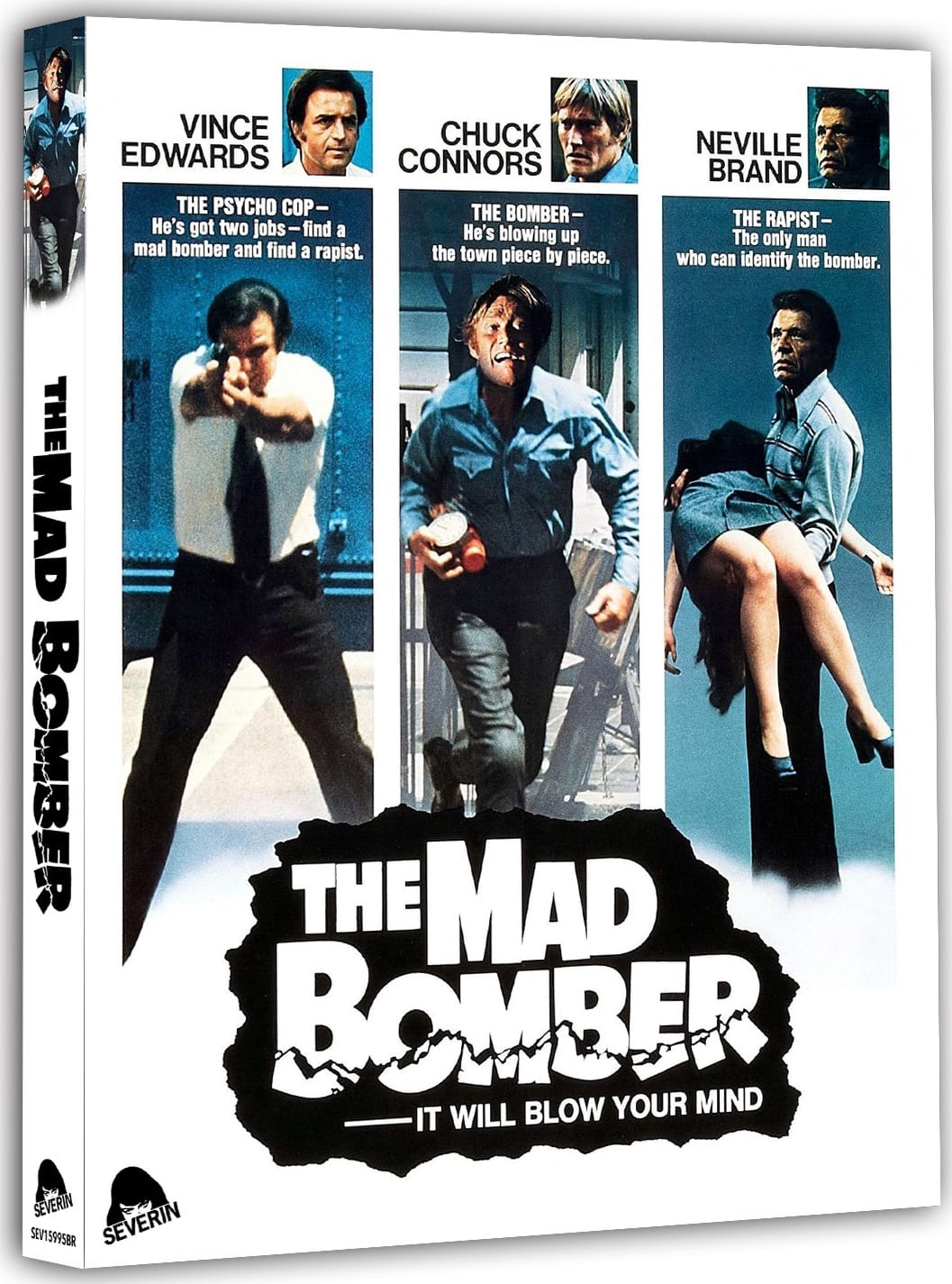

The Red Light Bandit speaks to the depth of Severin’s bench: It’s a 1968 Brazilian thriller about a thief and rapist who becomes a folk hero because he preys exclusively on Sao Paolo’s wealthy.
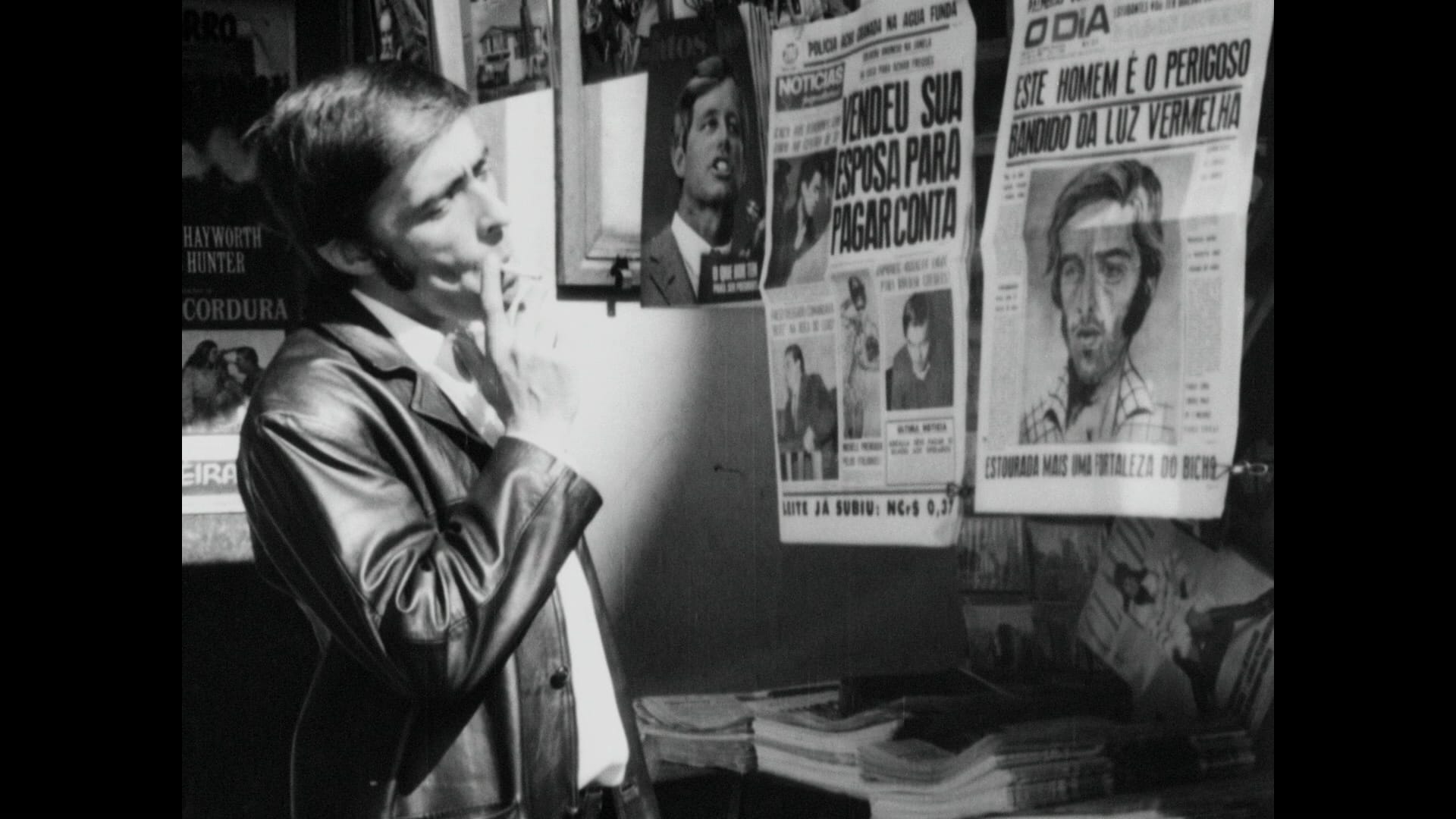
Writer-director Rogério Sganzerla was just 21 when he made it, and it’s absolutely the work of someone determined to make a splash with his immense talent; fortunately, Sganzerla was immensely talented, and 56 years later his movie still means to grab you by the lower lip and drag you through its waking nightmare of near-constant violence and cynicism – and maybe teach you a little about Brazilian politics along the way.
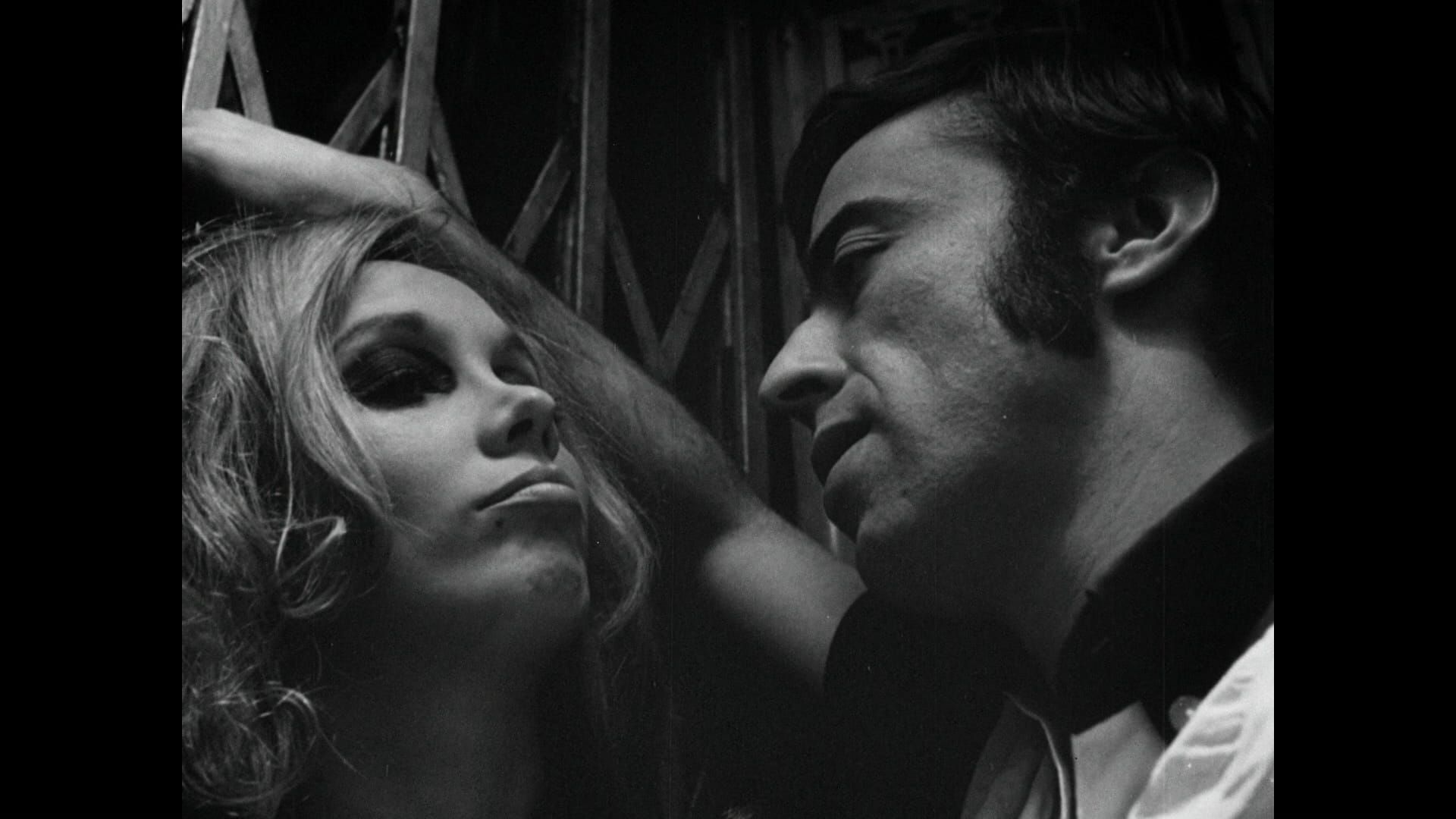
Mastered from a 2K scan of the negative, The Red Light Bandit is supported by interviews with producer Paulo Sacramento and co-star Helena Ignez and a pair of short films, Sganzerla’s Comics and Jairo Ferreira’s Horror Palace.
A rare change of genre from producer-director Bert I. Gordon, best known for high-concept programmers like Attack of the Puppet People and The Amazing Colossal Man, The Mad Bomber is his very sweaty 1972 thriller about the intersecting lives of three men in Los Angeles: A maniac terrorizing the city with IEDs, the serial rapist who’s seen his face and the detective driven to find them both.
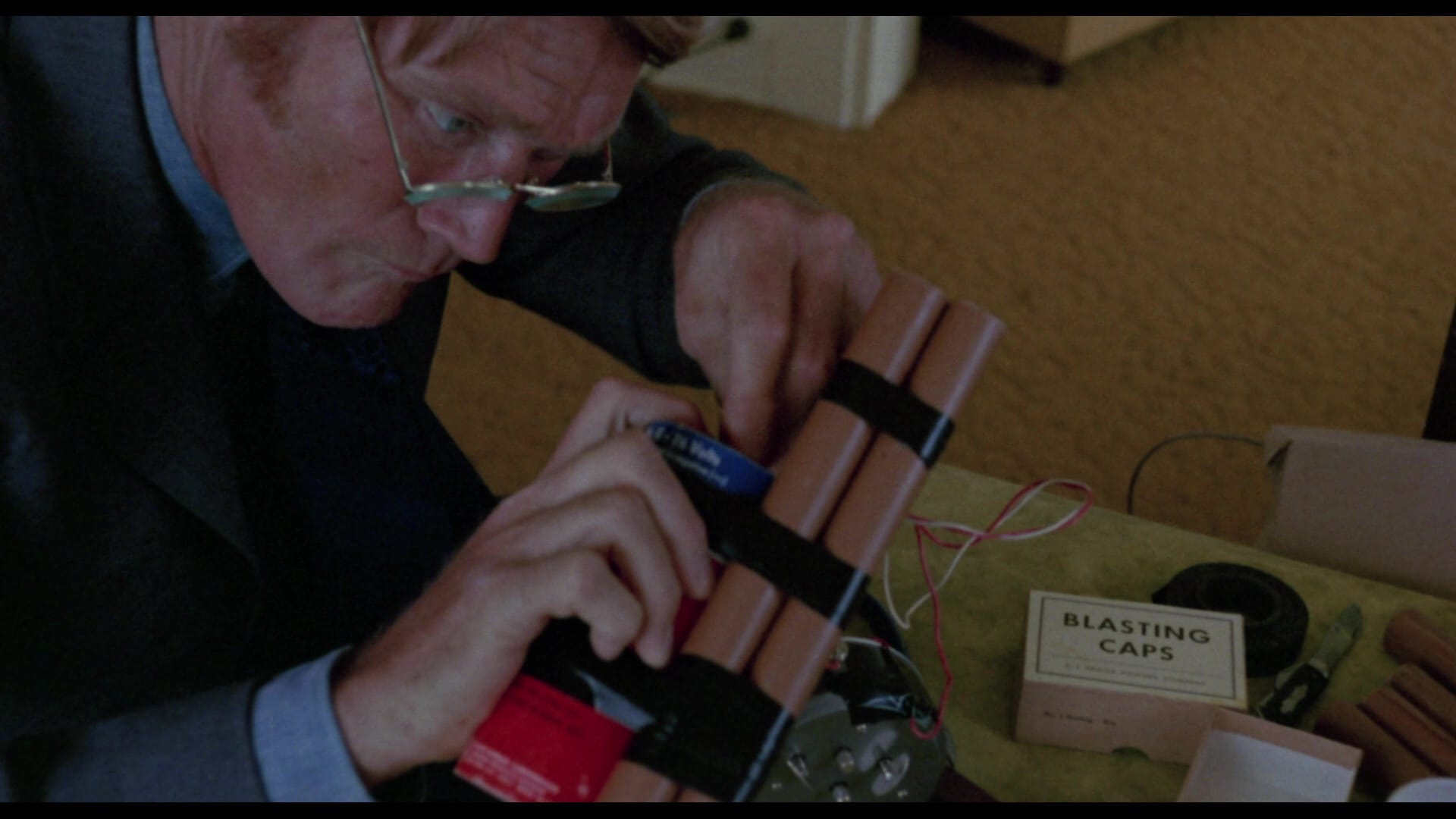
It’s as sleazy as they come, but there’s a certain integrity in its sleaziness – as a great man once said, this is a film that rises below vulgarity – and the fact that Gordon cast distinctive TV actors Chuck Connors (bomber), Neville Brand (rapist) and Vince Edwards (detective) and apparently didn’t bother to direct any of them results in a chaotic but unforgettable mismatch of performance styles. I’ve never seen anything like it. I don’t know that I needed to see it at all, but even so.
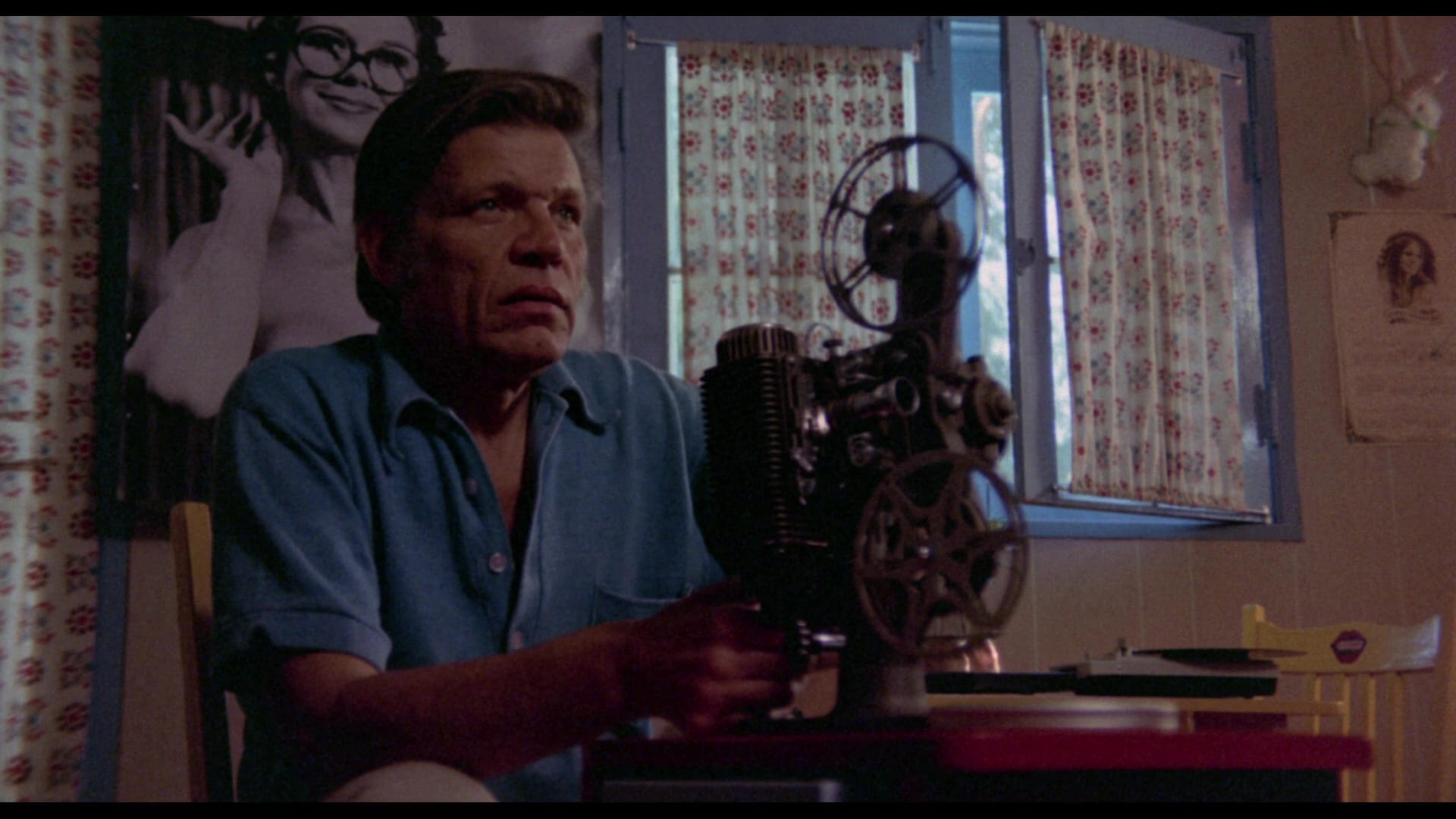
Severin’s disc is mastered from a brand-new 4K scan of the internegative (which bears the alternate title The Police Connection); extras include a new commentary by Kier-La Janisse and former bomb squad detective Mike Digby, an archival commentary by Gordon and new interviews with co-star Cynthia MacAdams and Gordon’s daughter Patricia. The disc also offers the TV cut of the film, which skims about thirty percent of the sleaze off the top, but leaves most of the sediment at the bottom.
And then there’s Don’t Change Hands, which is a genuine find.
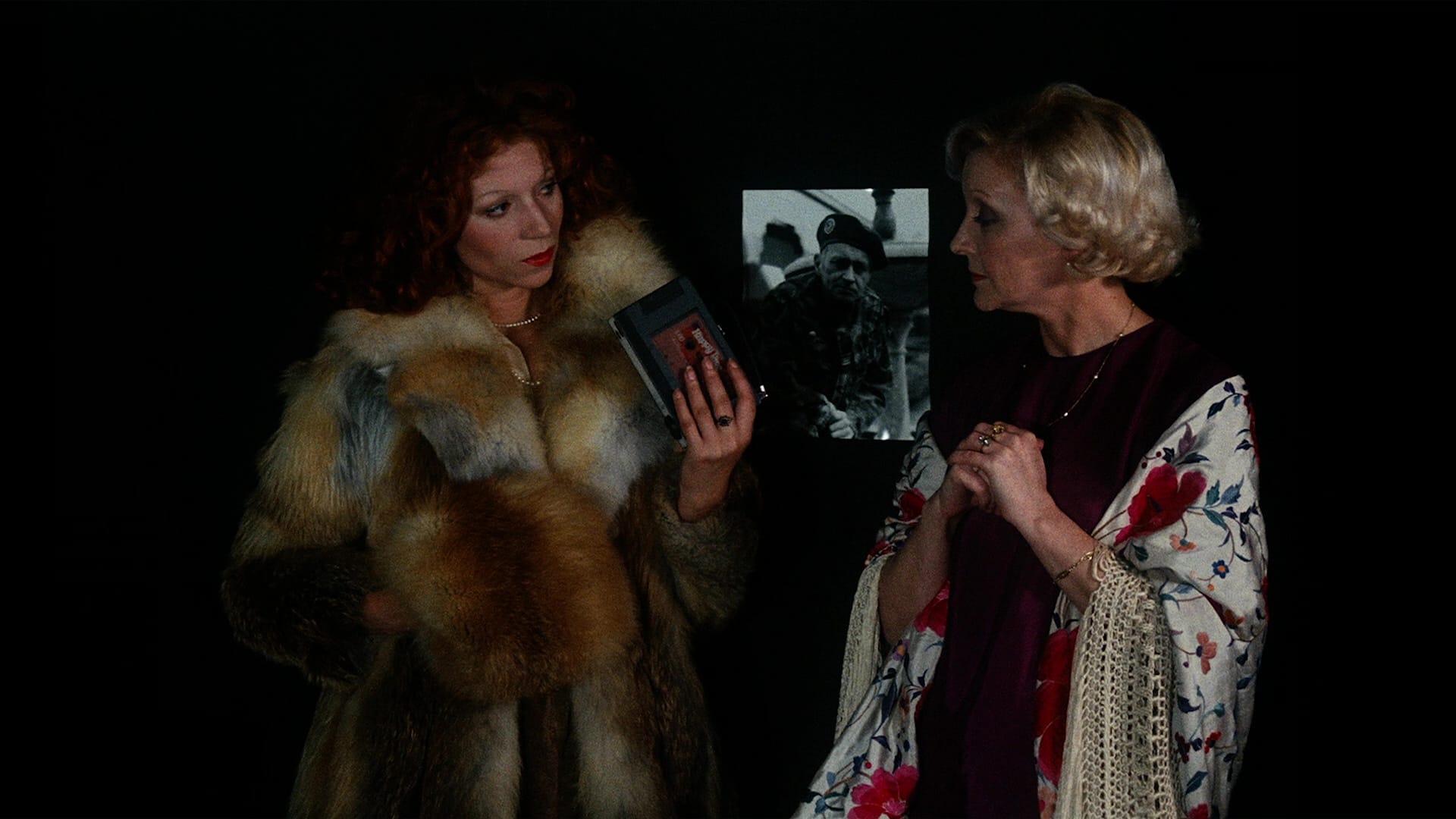
Released in 1975, Paul Vecchiali’s French thriller stars Myriam Mézières as Mélinda, a detective hired by newspaper owner and politician Françoise Bourgeois (Hélène Surgère) to find the person blackmailing her over her son’s appearance in a porn film. The trail leads Mélinda into the heart of the sleazy lesbian burlesque scene, with plenty of people doing their best to derail her investigation by luring her into bed.
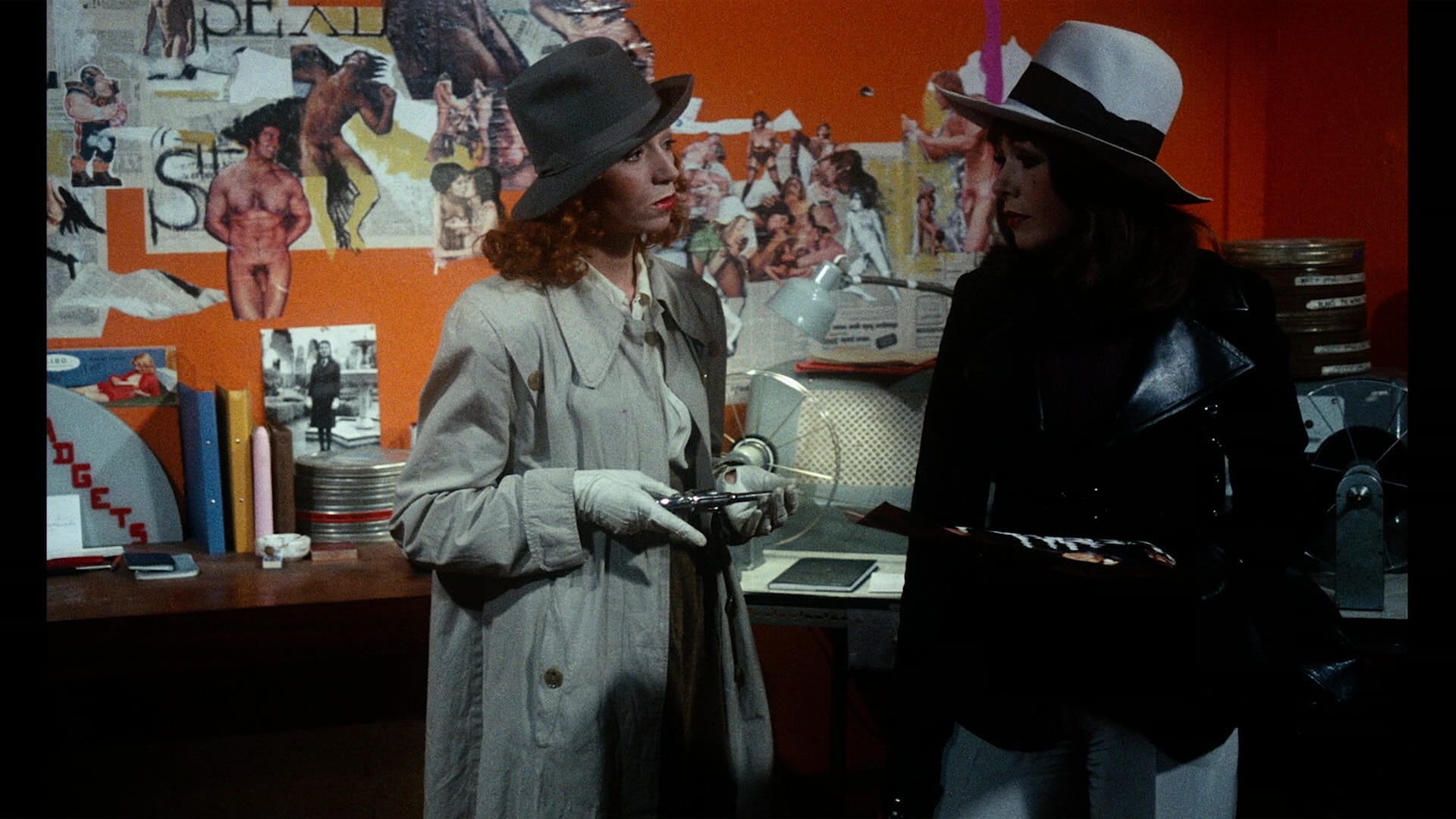
It’s hard-boiled meets hardcore – seriously, this thing stops dead for graphic sex more often than Caligula – with more than a splash of campy self-awareness. Vecchiali flips the genders on the perennial private-eye/family shame narrative, tempting his queer protagonist at every turn with hot lady-on-lady action. Maybe don’t have this one on in the background, come to think of it.
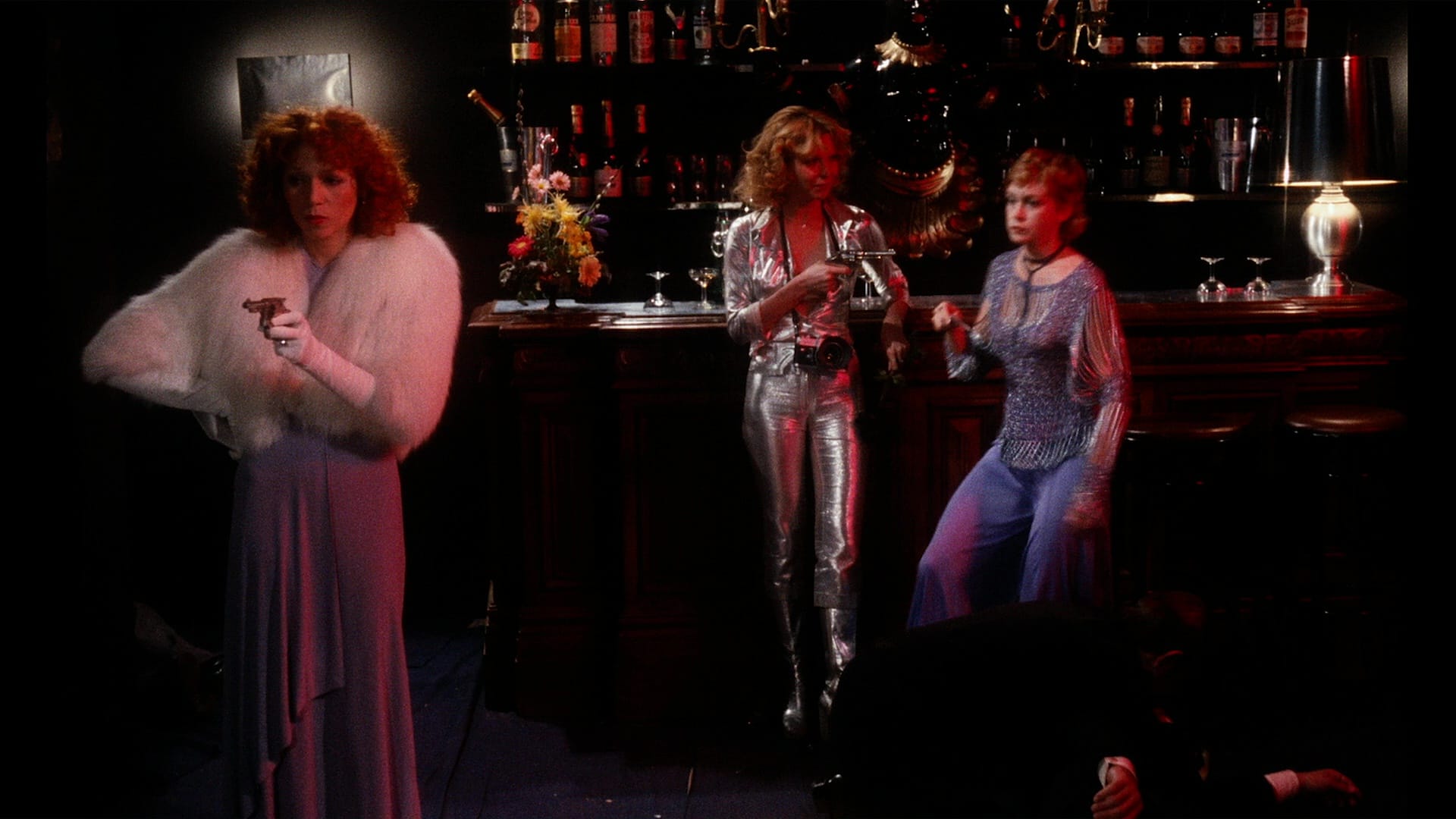
Extras include interviews with stars Mézières and Bouvet and co-writer Noël Simsolo, and appreciations from director Yann Gonzalez, whose 2018 Knife + Heart is definitely influenced by Don’t Change Hands, and author and filmmaker Matthieu Orléan, who places the director in the larger context of French cinema and queer art.
There, that lets me close out October with a clear conscience. Go eat candy, and save the real scares for when it gets dark.
Next week: Still kind of a horror vibe, as Zoë Kravitz asks us to Blink Twice and M. Night Shyamalan sets his Trap. But before that, there’s Friday’s What’s Worth Watching column for paid subscribers. You’re a paid subscriber, right? It’s five bucks a month! What is that these days, half a banana?
